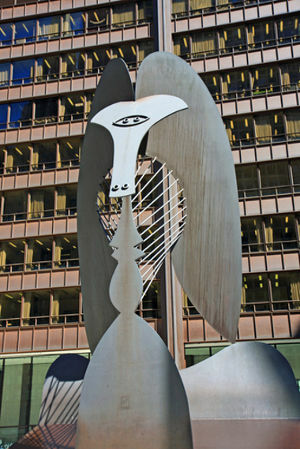In the mid-19th century, the plastic arts (sculpture and painting) were already following trends that challenged the artistic techniques practiced until then. O Impressionism it was one of the artistic trends that sought to capture effects hitherto not sought after, such as the attempt to transmit the impression of speed or, even, the impression of the passage of time. These techniques have enormously influenced modern trends. In the specific case of sculpture, the French impressionist Augusterodin it was one of the main models that modernist sculptures followed.
Trends in modern sculpture, in addition to being heirs of Impressionism, followed the proposals of the artistic avant-gardes of the early 20th century, especially the cubism, O Dadaism, O primitivism and, a posteriori, the abstractionism.
O constructivism (which was not restricted to the arts only) permeated the techniques used in all these trends, given that, unlike previous sculpting techniques, the constructivist technique is not it adhered to traditional materials, such as wood, marble, bronze, etc., but began to build sculptural forms with paper, plastic, pieces of unused domestic utensils, among others. stuff.
According to art historian Stephen Farthing, in his work All about Art:
There is no single defining characteristic of modernist sculpture: in fact, it is a turning point in the sculptors' quest to discover what theirs was. art, starting with the re-examination of the notions of representation, space, shape, volume and mass, followed by the choice of materials, until arriving at the methods constructive. [1]
One of the main representatives of this type of sculpture was the Romanian ConstantinBrancusi (see image of his work at the top of the text). Brancusi developed one of the greatest models of primitivist art, transforming his studies of classical sculptures in increasingly simple structures, preserving only what was most primitive and dense in the image. Alongside Brancusi, the Spanish pabloPicasso, who also excelled in painting, developed a series of sculptures that obeyed the Cubist style. An example can be seen below:

Above, an example of a Cubist sculpture by Spanish artist Pablo Picasso **
Over the years, especially during and after the period of Second World War, modern sculpture has followed new paths, especially with American and English schools, as Stephen Farthing also indicates:
In the 1930s and 1940s, sculpture became more abstract and stylized. This was a particularly rich and innovative period in British sculpture, represented by Henrymoore (1808-1896) and BarbarianHepworth (1903-1975), also adherents of the direct notch method. Moore, Hepworth and their friends and fellow artists Gabo and EricGill (1882-1940) influenced each other in the process of reviewing the foundations of the art of sculpture. [2]
The abstractionist style, associated with the constructivist technique, continued to produce heirs all over the world. The 1950s concretism was one of the trends that followed. Even today, in the 21st century, the first models of modern sculpture are followed by many renowned artists.
* Image credits:Shutterstock and Ioan Nicolae
** Image credits: Shutterstock and Thomas
GRADES
[1] Farthing, Stephen. all about art. Rio de Janeiro: Sextant, 2011. p.444.
[2] Idem. P. 445.
By Me. Cláudio Fernandes
Source: Brazil School - https://brasilescola.uol.com.br/artes/as-tendencias-escultura-moderna.htm

